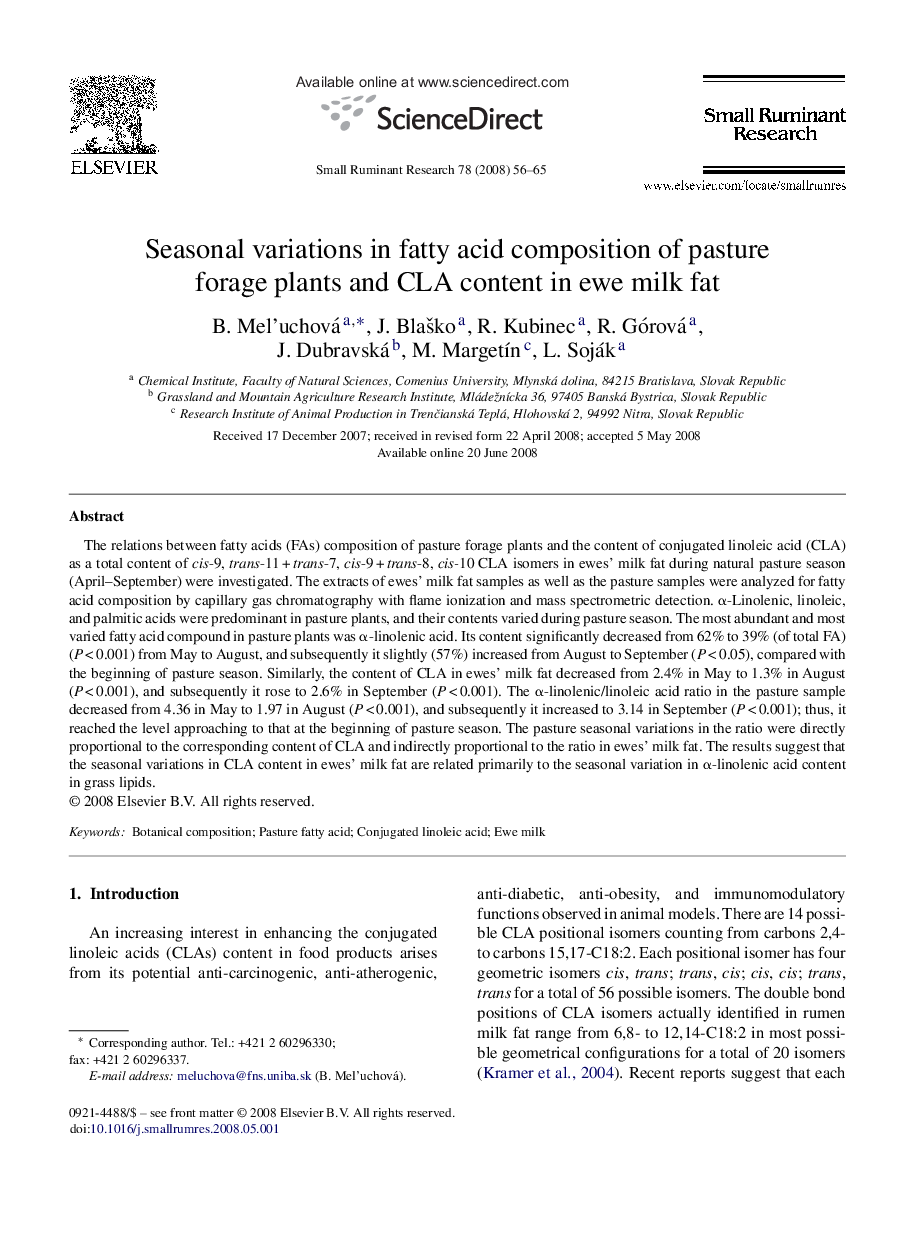| Article ID | Journal | Published Year | Pages | File Type |
|---|---|---|---|---|
| 2457879 | Small Ruminant Research | 2008 | 10 Pages |
The relations between fatty acids (FAs) composition of pasture forage plants and the content of conjugated linoleic acid (CLA) as a total content of cis-9, trans-11 + trans-7, cis-9 + trans-8, cis-10 CLA isomers in ewes’ milk fat during natural pasture season (April–September) were investigated. The extracts of ewes’ milk fat samples as well as the pasture samples were analyzed for fatty acid composition by capillary gas chromatography with flame ionization and mass spectrometric detection. α-Linolenic, linoleic, and palmitic acids were predominant in pasture plants, and their contents varied during pasture season. The most abundant and most varied fatty acid compound in pasture plants was α-linolenic acid. Its content significantly decreased from 62% to 39% (of total FA) (P < 0.001) from May to August, and subsequently it slightly (57%) increased from August to September (P < 0.05), compared with the beginning of pasture season. Similarly, the content of CLA in ewes’ milk fat decreased from 2.4% in May to 1.3% in August (P < 0.001), and subsequently it rose to 2.6% in September (P < 0.001). The α-linolenic/linoleic acid ratio in the pasture sample decreased from 4.36 in May to 1.97 in August (P < 0.001), and subsequently it increased to 3.14 in September (P < 0.001); thus, it reached the level approaching to that at the beginning of pasture season. The pasture seasonal variations in the ratio were directly proportional to the corresponding content of CLA and indirectly proportional to the ratio in ewes’ milk fat. The results suggest that the seasonal variations in CLA content in ewes’ milk fat are related primarily to the seasonal variation in α-linolenic acid content in grass lipids.
